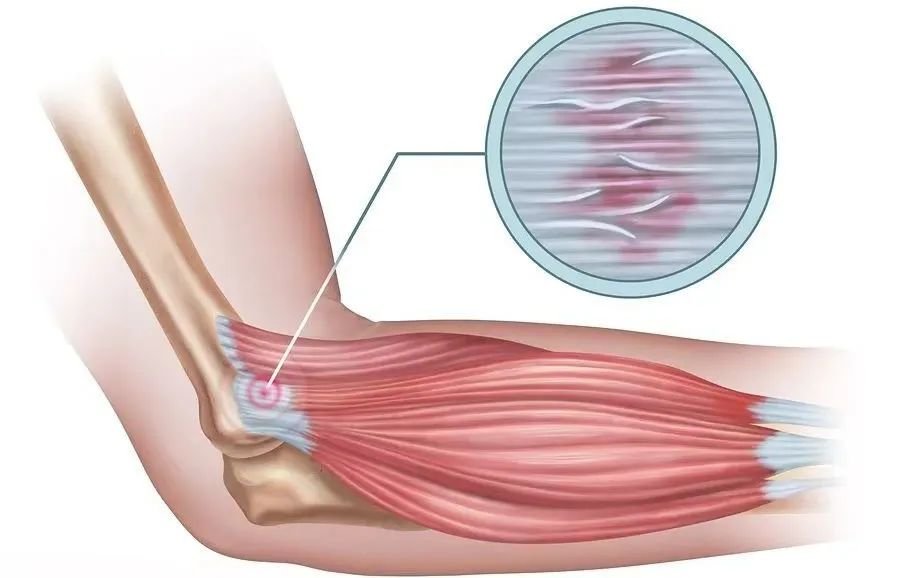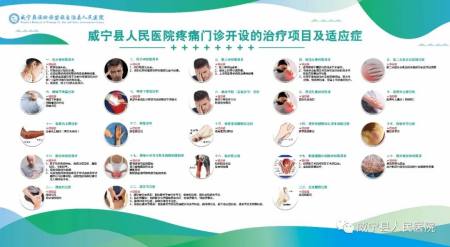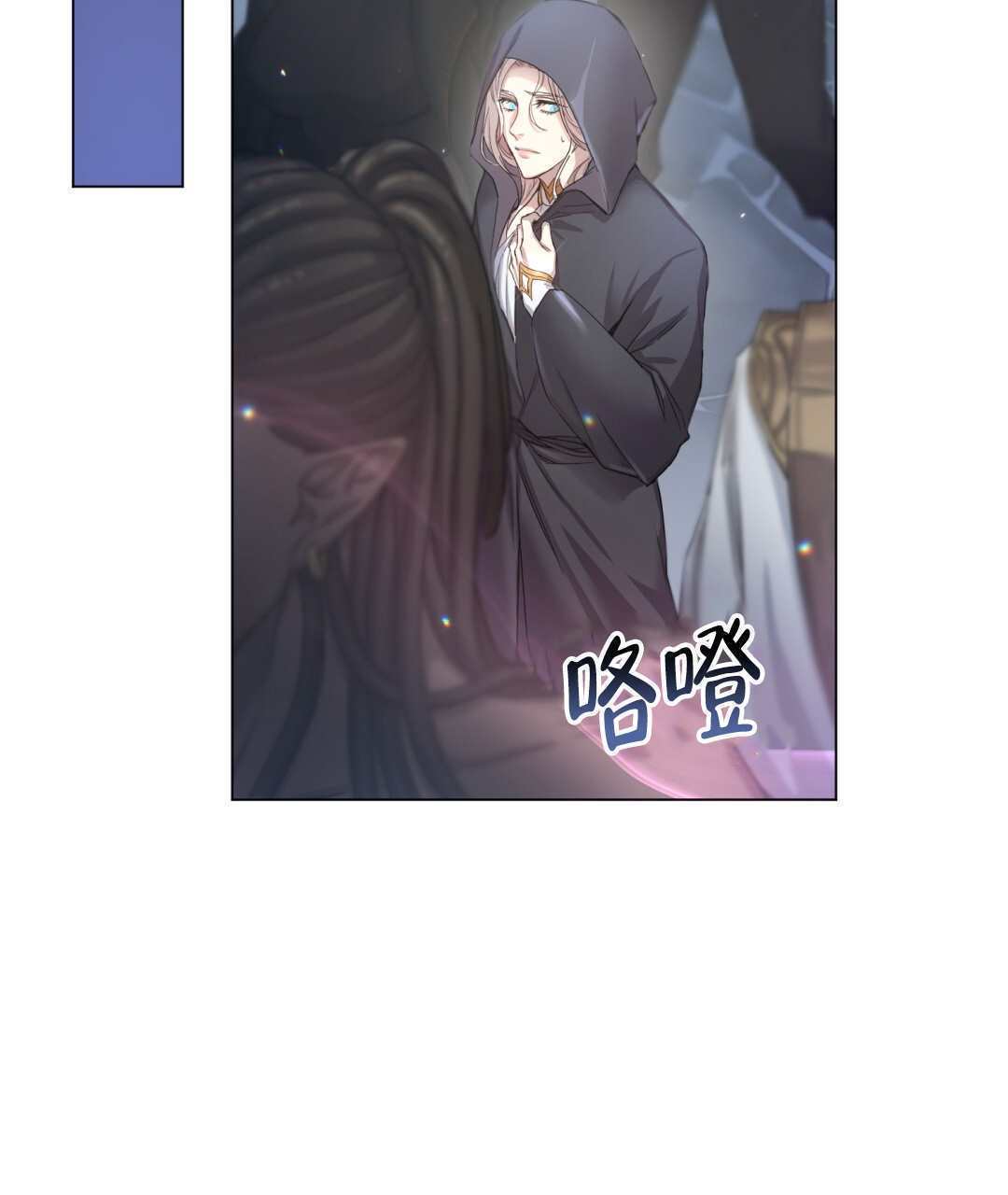人教版英语八年级上册Unit 8 知识点详解
Unit 8 How do you make a banana milk shake?
1. How do you make a banana milk shake? 你怎样制作香蕉奶昔?
【解析】①本句是一个特殊疑问句,由特殊疑问词how引导的,how“怎样,如何” ,用于提问动作的方式,方法,手段
e.g. How did you find it? 你是怎样发现它的?
②make→ made → made v. 制,做
其后可接双宾语,即make sb. sth.或make sth. for sb.意为“为某人制作某物”
e.g. Lucy made a beautiful card for me. 露西为我制作了一张漂亮的卡片。
make sb. do sth. 使某人做某事
e.g. Our teacher made us listen to him carefully. 我们的老师让我们仔细地听他说。
与make有关的短语:make dumplings 包饺子 make a kite 做风筝 make a banana milk shake 制作香蕉奶昔
make faces 做鬼脸 make friends 交朋友 make the bed 整理床铺
make mistakes 犯错 make up 编造 make room 腾出地方
③milk shake意为“奶昔”,此处shake作名词,意为“奶昔”
shake (shook , shaken) v. 摇动; 抖动
shake hands with sb. 和某人握手
shake one’s head 摇头
e.g. The two men shook hands with each other. 那两个人互相握了握手。
When you cant answer this question,shake your head. 当你不会回答这问题时,摇摇头。
2. Turn on the blender. 打开果汁机。
【解析】①本句是一个祈使句。祈使句表示请求、命令、建议、禁止等。说话的对象大多为第二人称you,且常被省略。句末用感叹号或句号,读时用降调。否定句常在动词前加dont。
e.g. Please dont turn on the blender. 请不要打开果汁机。
②turn on “打开”,其反义词组是turn off 意为“关上”。它们是“动词+副词”构成的短语动词,宾语是代词时应放在turn 与on 或off 中间。
e.g. I want to watch TV. Please turn it on. 我想看电视。请打开它。
与turn有关的短语:(1)turn on 打开,指把电器,水龙头等打开
(2)turn off 关掉
(3)turn up 把……声音调大 (反) turn down 把……声音调小
(4)turn right/left 向右转/左转
(5)turn to 翻到
(6)take turn to do sth. 轮流做某事
(7)It’s one’s turn to do sth 轮到某人做某事
3. Cut up the bananas. 切碎香蕉。
【解析】cut →cut→ cut v. 切,割
cut up意为“切碎”,相当于cut...into pieces
e.g. Please help me cut up the apples. 请帮我把苹果切碎。
与cut有关的短语:cut …into … 把…切割成… cut down 砍倒 cut in 插嘴
cut off 切断,砍掉 cut one’s hair 理发
与up有关的短语:put up 张贴;搭起;举起 use up 用尽 eat up 吃光
give up 放弃 get up 起床 wake up 醒来
stay up 熬夜 dress up 装扮;乔装打扮
grow up 长大;成熟;成长 take up 占据;开始从事
4. Peel three bananas. 剥三根香蕉。
【解析】peel (1) v. 剥皮,削皮 peel sb. sth.=peel sth. for sb. 为某人削(水果皮)
(2) n. 水果皮 apple peel 苹果皮 orange peel 香蕉皮
5. Pour the milk into the blender. 将牛奶倒入搅拌器。
【解析】①pour v. 倒,灌
pour … into… 把….倒进… pour … out… 把……倒出
pour sth. for sb.意为“给某人倒某物”
e.g. Please pour the water into the cup. 请把水倒入杯中。
Please pour the cold water out . 请把冷水倒出来。
Could you please pour some water for me? 请给我倒些水好吗?
②【辨析】in/ into
in 是表示物体位置的静态介词
into 是表示动作方向的动态介词。“ 到……里; 进入……里” 。表示方向,后跟表地点的名词, 前面常有动词, 常与表示动作的动词come; go ; run等连用。反义词为out of “从…里出来”
e.g. She walked into the room. 他走进了房间。
She is walking in the room. 他正在房间里踱来踱去。
6. Put the bananas and ice-cream in the blender. 把香蕉和冰激凌放进搅拌器。
【解析】put →put→ put v. 放,放置
put …on… 把…….放在…上 put …in …把… 放在…里 put …into…把… 放在…里
e.g. Put your book on the desk. 把你的书放在桌子上。
Don’t put too much salt in the soup. 不要在汤里放太多的盐。
与put相关的短语:put up 张贴 put away 把…收拾好 put on 穿上 put off 推迟
7. How many bananas do we need? 我们需要多少香蕉?
【解析】(1) how many + 可数名词复数意为“多少” ,常用来对可数名词的数量提问
(2) how much+不可数名词意为“多少”,常用来对不可数名词的数量提问,还可以对物品的价格提问
e.g. How much water do you need? 你需要多少水?
How many cups of water do you need? 你需要多少杯水?
How much are they? 它们值多少钱?
8. We need three bananas. 我们需要三根香蕉。
【解析】need v. 需要
用于肯定句,是实义动词。
(1)人做主语,sb. need to do sth.意为“某人需要做某事”
(2)物做主语,sth. need doing sth.= sth. need to be done
e.g. Students need to have a good rest in studying. 在学习方面学生需要有一个好的休息。
Don’t throw away the waste paper. It needs collecting so that it can be reused.
不要乱扔废纸,它需要被收集以至于可以被再次使用。
用于否定句或疑问句,是情态动词。
(1)needn’t = don’t have to意为“没有必要”
(2)need ,must 引导的一般疑问句,肯定会的用must,否定回答用needn’t
e.g. We _________ use mobile phones when the plane takes off.
A. may not B. shouldn’t C. needn’t D. mustn’t
— Must we take out the trash now?
— __________. You can do it after class.
A. Yes , you must B. No ,you can’t
C. Yes, you may D. No, you needn’t
9. We need one cup of yougurt. 我们需要一杯酸奶。
【解析】不可数名词的“量”的表达方式:
不可数名词没有复数形式,在表达它的量时, 常用容器或质量的计算单位来表示,即:“数词+ 量词+ of +不可数名词”。若数词大于1时,只需要把不可数名词前面的量词变为复数。
a cup of… 一杯 two cups of … 两杯…
a teaspoon of… 一茶匙 two teaspoons of … 两茶匙…
a slice of … 一片… two slices of … 两片…
a kilo of … 一公斤… five kilos of … 五公斤…
e.g. We have bought two _________ for the coming party.
A. box of apple B. boxes of apples
C. box of apples D. boxes of apple
10. Let’s make fruit salad. 咱们制作水果沙拉吧。
Let me think... We need two apples. 让我想想...... 我们需要两个苹果。
【解析】①Let’s do sth.意为“让我们一起做某事”,用来表示说话者的建议
肯定回答:OK./All right./That’s a good idea./Yes ,let’s …
否定回答:Sorry, I can’t
②let sb. do sth.意为“让某人做某事”
11. Next, put the beef, carrots and potatoes into a pot and add some water.
下一步,把牛肉、胡萝卜和土豆放在锅中并加上一些水。
【解析】add v.增加;添加
add...to...意为“把……加到……中去;往……中加……”。
add to (add作不及物动词用)表示“增加;添加”,其中to是介词,后接名词或代词
add up to意为“总共是;总计为”
e.g. Please add some salt to the food. 请给食物里面加点盐。
If you add 4 to 6, you get 10. 4加6等于10。
The flowers add to the beauty of the city. 这些花增添了这所城市的美。
All of these add up to 20. 所有这些总共是20。
12. No, one more thing. Finally ,don’t forget to add some salt.
不,还有一件事。最后别忘了放点盐。
【解析】①more 又;再,与another同义
数词+more+ n.=another+数词+n.
They stayed there two more days.=They stayed there another two days. 他们在那里又待了两天。
②forget v. 忘记
forget to do sth. 忘记做某事(事情未做)
forget doing sth. 忘记做过某事(事情已做)
e.g. Don’t forget ____________(close) the door when you leave.
I forget closing the window.
13. Finally, turn on the blender. 最后,打开搅拌器。
【解析】finally adv. 最后地 → final adj. 最终的
同义短语是:at last;in the end。
finally可位于句首、句中或句末。位于句中时,要放在be动词、助动词或情态动词之后,实义动词之前。表示做某事的先后顺序时可用first,next,then,finally。
e.g. I finally finished my homework. 我终于完成了我的作业。
14. Do you know how to plant a tree? 你知道如何栽树吗?
【解析】how to plant a tree是“疑问词 + 动词不定式”结构,在句中作谓语动词know的宾语。动词不定式常与what, how, where, when等疑问词连用,在句中作主语、宾语、表语等。
e.g. When to start is not decided yet. 什么时候动身还没有决定。(作主语)
I don’t know how to use this mechine. 我不知道怎么用这台机器。(作宾语)
The question is what to do next. 问题是下一步做什么。(作表语)
【拓展】“疑问词 + 动词不定式”的常见考点:
①“疑问词 + 动词不定式”的同义转换
I don’t know what I shoud do next. → I don’t know waht to do next. 我不知道接下来做什么。
②动词后面是否加介词
I didn’t decide which room to live in. 我没有决定住哪个房间。
③动词后面是否需要宾语
I don’t know what to do. 我不知道做什么。
15. First, dig a hole. 首先,挖一个坑。
【解析】①dig此处用作及物动词,意为“挖地;凿洞;挖土”,过去式为dug,过去分词为digging
②hole n. “洞;坑;孔”
1. I want to watch the ball game. Can you _______ the TV?
A. open B. close C. turn on D. turn off
2. The meat is too big. Let’s cut ______.
A. them up B. it up C. up them D. up it
3. _______ the books in the bookcase, Jerry.
A. Put B. To put C. Putting D. Puts
4. Look! There are ________ on the desk.
A. four cup of tea B. four cup of teas
C. four cups of teas D. four cups of tea
5.—_______ are the mushrooms?
—Two yuan a kilo.
A. How much B. How many
C. What D. How
6. You _____ get up so early, but you must go to work on time.
A. mustn’t B. have to C. may D. needn’t
7. Here is a ______ for a great beef sandwich!
A. way B. recipe C. idea D. bowl
8. _______, cut up two apples, then put them into the blender. Finally turn on the blender.
A. And B. Next C. First D. Then
9.—Would you like some yogurt?
—_______.
A. Yes, I would B. No, thanks
C. Thank you D. It doesn’t matter
10.—How much yogurt do we need?
—We need ______.
A. one B. two C. one cup D. two cups
完成下列句子
1. 我们需要多少酸奶?
_________ ___________ ____________ do we need?
2. 让我们制作水果沙拉吧。
let’s ___________ _____________ ____________.
3. 你会做草莓奶昔吗?
Can you __________ ____________ ________________ _____________ ______________?
重排下列句子,成为一段完整的对话。
A. First, put the water into the pot.
B. Next, put the noodles into the pot and cook for ten minutes.
C. How many noodles do we need?
D. How much water do we need?
E. How do we make egg noodles?
F. What do we do next?
G. Five bowls.
H. Half a kilo.
I. Finally, put the egg into the pot and cook for another five minutes.
补全下列空格
1. --_______ _______ bananas do you buy?
--Three kilos.
2. -- _______ _______ bread do we need?
--Three pieces.
3._______ _______ (not play) computer games, Jack!
4. There is an orange on the table. (对划线部分提问)
_______ _______ oranges are there on the table?
5.---_______ _______ tomato sauce is there in the bottle?
---A little.
1. First, put some butter on a piece of bread. 首先,在一片面包上涂一些黄油。
【解析】piece n. 片;块;段
它是可数名词。表示不可数名词的量时,可用“基数词+piece(s) of+不可数名词”。
e.g. There are two pieces of bread on the table. 桌子上有两块面包。
How many pieces of sandwiches do you need? 你需要多少片三明治?
2. In most countries,people usually eat traditional food on special holidays.
在大多数国家,人们通常在特殊的节日吃传统的食物。
【解读】traditional adj. 传统的;惯例的
e.g. Chinese traditional medicine is popular in the world. 在世界上,中国的传统医药是很受欢迎的。
【拓展】tradition n. 传统;惯例;规矩
e.g. It is a tradition that the young look after the old in China. 在中国,年轻人照顾老年人是一个传统。
3....and is a time to give thanks for good in the autumn.
···是一个感恩秋季收获食物的季节。
【解析】①动词不定式to give thanks for food in the autumn在句中作定语,修饰前面的名词time。动词不定式(短语)若在句中作定语,常放在被修饰的名词或代词之后,即作后置定语。
e.g. Spring is the best time to fly kites. 春天是放风筝最好的时节。
②give thanks for sth.意为“对某事表示感谢”
【拓展】give thanks to sb.意为“对某人表示感谢”
e.g. I’d like to give thanks for your help. 对你的帮助,我深表谢意。
They gave thanks to the old man. 他们对这位老人表示感谢。
③autumn名词,意为“秋天;秋季”,相当于fall。
in autumn意为“在秋天/季”;in the autumn指在当年的秋天
4. At this time, people also remember the first travelers from England who came to live in America about 400 years ago.
此时,人们也回忆起约400年前从英格兰迁来美洲生活的首批漂泊者。
【解析】who came to live in America about 400 years ago是由关系代词who引导的定语从句,修饰先行词travelers
traveler n. 漂泊者;旅行者;游客,也可表达为:traveller
travel v. 旅行
e.g. Every year, many travelers come to China to visit the Great Wall. 每年,许多游客来中国参观长城。
Where are you going to travel this summer holiday? 今年暑假你打算去哪儿旅行?
5. These days, most Americans still celebrate this idea of giving thanks by having a big meal at home with their family.
现在,许多美国人仍然庆祝这个给予感恩的主意,他们通过和家人在家吃大餐进行庆祝。
【解析】本句是简单句。by having a big meal at home with their family是介词短语作状语。
①celebrate v. 庆祝;庆贺,其后接事物。
celebration n. 庆祝活动;典礼
e.g. Were celebrating our grandfathers eightieth birthday. 我们正在庆祝祖父的80岁生日。
②“by + v.-ing形式”意为“通过做···”,常用来回答How do you...?或How can I...?等问句。
③family意为“家人”
【拓展】family指家庭这个整体时,意为“家;家庭”时,谓语动词用单数形式;指家庭成员时,意为“家人”时,谓语动词用复数形式。
e.g. Jim’s family is small.
Her family are all here.
6.Here is one way to make turkey for a Thanksgiving dinner.
这是为感恩节大餐制作火鸡的一种方法。
【解析】one way to do sth.意为“做某事的一种方式或方法”,其中动词不定式短语作名词way的后置定语,该结构相当于one way of doing sth.
e.g. Do you know a good way to learn English? = Do you know a good way of learning English?
你知道学习英语的好方法吗?
7. First, mix together some bread pieces, onions, salt and pepper.
首先,把一些面包屑、洋葱、盐和胡椒粉混合在一起。
【解析】mix...and...意为“把···和···混合”,其中mix此处用作及物动词,意为“使混合;融合”
【拓展】mix up意为“混合;混淆”
e.g. She mixed the butter and sugar together. 她把黄油和糖拌在了一起。
Let’s mix up the two kinds of seeds. 让我们把这两种种子混合在一起吧。
8. Next,fill the turkey with this bread mix. 下一步,用面包混合物填满火鸡。
【解析】fill v. (使) 充满;装满
fill...with...意为“用···装满···”
【拓展】full形容词,意为“满的”,be full of意为“充满···”,与be filled with同义
e.g. He filled the box with apples. 他用苹果把盒子装满。
The glass is filled with water.=The glass is full of water. 玻璃杯里装满了水。
9.Then, put the turkey in a hot oven and cook it for a few hours.
然后,把火鸡放入一个热烤箱烤上几个小时。
【解析】a few意为“一些;几个”,修饰可数名词复数,相当于several或some,表示肯定含义
【辨析】a few, few, a little和little
修饰可数名词复数修饰不可数名词
肯定(一些;几个)a fewa little
否定(几乎没有)fewlittle
e.g. There are a few eggs in the fridge, so I needn’t buy any at once.
There are few eggs in the fridge, so I must buy some.
I can only speak a little French. 我只会说一点法语。
There’s little rice in the bowl. 碗里没多少米饭了。
10. When it is ready,place the turkey on a large plate and cover it with gravy.
当它准备好后,把火鸡放在一个大盘上,覆盖上肉汁。
【解析】cover v. 遮盖;覆盖 n.覆盖物;盖子
①作动词时,可构成短语 cover...with...意为“用……把……覆盖”。
be covered with...被……所覆盖
②作名词,意为“封面;覆盖物;盖子”
e.g. She covered the table with a cloth. 她用一块布把桌子盖起来。
The playground is covered with snow. 操场被雪覆盖了。
I dont like the metal cover. 我不喜欢这个金属盖子。
11. Finally,serve it to your friends with some other food.
最后,伴着其他食物把它端给你的朋友们。
【解析】serve v.接待;服务;提供
常用短语:serve sb. sth.=serve sth. to sb.意为“用某物招待某人”
service n. 服务;接待 servant n.仆人
e.g. If you come here,I can serve you the best food. 如果你来这儿,我会用最好的食物招待你。
Can you serve milk shake to me? 你能用奶昔招待我吗?
12.Then, cook it at a very high temperature for a long time.
然后,以高温长时间烘烤。
【解析】temperature名词,意为“温度”,at a very high/low temperature意为“以高温/低温;在高温/低温下”
【拓展】①temperature还可意为“气温”,对气温进行提问用what
②take one’s temperature意为“量某人的体温”
③the tempurature of意为“···的温度”
13. To make this special food, you need to have rice noodles, chicken soup, chicken, lettuce and eggs.
为做这种特别的食物,你需要有米线、鸡汤、鸡肉、生菜和鸡蛋。
【解析】动词不定式短语to make this special food在本句中作目的状语。动词不定式(短语)作目的状语可位于句首,与后面的句子常用逗号隔开,意为“为了做某事”。
e.g. To buy her favorite book, she went to the bookshop on foot. 为了买她最喜欢的书,她步行去了书店。
14.Then, make the chicken soup very hot, over 100℃.
然后,将鸡汤烧到很热,超过100摄氏度。
【解析】“make + 宾语 + 形容词”表示“使···怎么样”,其中形容词作宾语补足语
【拓展】make sb. do sth.意为“使某人做某事”
e.g. Try to make your bedroom tidy. 尽量使你的卧室整洁。
The maneger made the workers work the whole night. 经理让工人们工作了一整晚。
15. Now, it’s time to enjoy the rice noodles! 现在就是好好享用米线的时刻了!
【解析】“It’s time (for sb.) to do sth.”为固定句型,意为“到(某人)做某事的时间了”
【拓展】“It’s time for sth.”也是一个常用句型,意为“到(做)某事的时间了”。for是介词,后常接名词或代词
e.g. It’s time for us to have a rest. 到我们休息的时间了。
It’s time for dinneer. 到吃晚饭的时间了。
1. It’s getting dark. Can you ______ the light?
A. turn off B. turn on C. turn over
2. — ________ yogurt do you need?
— One teaspoon.
A. How many B. How much C. Which
3. The baby can eat ____ bread for breakfast.
A. two B. many of C. two slices of
4. I have _______ bananas in the fridge.
A. a lot B. many C. much
5. Would you like ____ relish on the bread?
A. manyB. any C. some
单项选择
( )1. — Do you like ______ onions in _____ sandwich?
— No, I don’t.
A. an; the B. the; an C. /; aD. the; /
( )2. — When is Children’s Day?
— _____ June 1st ________ each year.
A. In; /B. On; /C. In; onD. On; in
( )3. — Do you need some _______?
— Oh, yes. The coffee is too strong.
A. sugar B. lettuceC. salt D. yogurt
( )4. — Why did you make this birthday cake?
— ________ today is your birthday!
A. IfB. WhenC. ThoughD. Because
( )5. First he washed his clothes, and then cleaned the house. ________ he cooked lunch.
A. Finally B. QuicklyC. ClearlyD. Loudly
( )6. The weekend is coming. And it’s time _________.
A. relaxB. relaxingC. to relaxingD. to relax
( )7. The __________ food for Chinese to eat on the Dragon Boat Festival is zong zi.
A. expensive B. impossibleC. traditionalD. primary
( )8. — _________ honey do we need?
— Two cups.
A. How much B. How many C. How far D. How long
( )9. — How will you ________ the holiday?
— We will have parties.
A. shakeB. celebrate C. coverD. discuss
( )10. — Please _______ the computer for me. I want to check my e-mails.
— OK.
A. turn onB. cut upC. turn offD. cut down
( )11. There _____ any meat. Let’s buy some.
A. isn’t B. aren’tC. is D. are
( )12. — Would you like something to eat?
— Just _______ bread.
A. a bottle ofB. a cup ofC. a spoon ofD. a piece of
( )13. _______ the table ______ a cloth, or it will get dirty.
A. Fill; withB. Send; to
C. Cover; withD. Give; to
( )14. — Mike forgot _________ the window before leaving.
— Oh, there is rain water everywhere in the room.
A. to closing B. to closeC. closeD. closed
( )15. — Let’s go for a walk.
— Well, I don’t like to go walking. ______.
A. I don’t think so B. Good idea
C. It sounds boringD. Don’t worry
31-35 CBADA 36-40 DCABA 41-45 ADCBC
完形填空
There was a special burger(汉堡包). She had many lives and would never 1 . Each day she woke up, and waited her turn to be cooked by the 2 . After someone ate her, she seemed to be sleeping. The next day, it would 3 again.
But one day, she heard a customer (顾客) called her “junk food”. Then she understood why most of her favorite customers were unhealthy. She decided to do 4 to change (改变) it.
The next day, a boy picked her and opened his 5 to eat her. After he finished eating, he said, “This burger doesn’t taste as 6 as before.”
That was 7 plan. When someone always ate them, she asked other burgers not to be delicious. 8 the customers came once during a long time, they would become more delicious.
In this way, they began to see 9 fat customers. At the same time, these burgers became much more 10 , because it’s more enjoyable (令人愉快的) to taste something more delicious after some time.
( )1. A. wake B. appear C. dieD. talk
( )2. A. cookB. driver C. doctorD. pilot
( )3. A. stopB. end C. fall D. happen
( )4. A. everything B. something C. anythingD. nothing
( )5. A. armB. heart C. mouth D. hand
( )6. A. good B. bad C. cold D. old
( )7. A. my B. itsC. herD. his
( )8. A. AndB. Or C. Because D. If
( )9. A. lessB. fewer C. worseD. harder
( )10. A. popularB. serious C. meaninglessD. similar
阅读理解
A
How to Make Ice Cream in a Bag
What You Will Need:
1 spoon of sugar, 1/2 cup of half and half (牛奶和奶油的混合物), 1/4 spoon of vanilla extract (香草精), ice, salt, a big bag, a small bag.
How We Make it:
★First, put the sugar, half and half and vanilla extract into the small bag.
★Next, put three glasses of ice into the big bag.
★Then, pour about 1/2 cup of salt in the big bag.
★When it’s ready, place the small bag in the big bag and seal tightly (系紧). You need to shake the bag for about five minutes.
★Finally, take the small bag out. After wiping off (擦去) the salt on the bag, you can open it and enjoy your ice cream.
You can finish all of the work in less than ten minutes.
( )11. When making the ice cream, what do you need?
A. A spoon of sugar. B. A cup of half and half.
C. A glass of ice. D. A spoon of salt.
( )12. How many kinds of things should you put into the small bag?
A. One. B. Two. C. Three. D. Four.
( )13. What should you put into the big bag at last?
A. Ice. B. The small bag.
C. Salt. D. The vanilla extract.
( )14. What should you do before you open the small bag?
A. Put it into the fridge.B. Wait ten minutes.
C. Wipe off the salt. D. Shake the small bag.
( )15. How long will it take you to make an ice cream?
A. More than five minutes. B. Less than five minutes.
C. More than ten minutes. D. Less than ten minutes.
B
I’m Tim, a 15-year-old school boy now. I traveled through a city seven years ago.
When I was a child, I learnt from a book that a 16-year-old girl had traveled through Europe, so I hoped I could travel through another city one day. My parents finally agreed with me. After that, I began to plan my trip.
That Saturday morning, I took a train to Willow City, North Dakota. It is a small city. The main street has two bars, one post office, three banks, a clothes store, an old cinema and two supermarkets.
In New York if we are out, it’s not often that we see anyone we know. Here, it’s just the opposite (相反的). They can even tell you who is the owner of a car. Everybody who lives here thinks this small city is quiet and safe.
Now I plan to visit my country by myself, and I will also write travel diaries after traveling every city.
( )16. How old was Tim when he traveled through Willow City?
A. 6.B. 7. C. 8. D. 9.
( )17. What can you see on the main street of Willow City?
A. Two supermarkets. B. Two post offices.
C. Three clothes stores. D. Three bars.
( )18. Why did Tim want to travel through the city?
A. Because his parents made him do that.
B. Because he wanted to be famous.
C. Because he wanted to learn more about the world.
D. Because a girl’s journey to Europe inspired (激励) him.
( )19. Which of the following is NOT true?
A. Tim went to Willow City by train.
B. Tim went to Willow City on a Saturday.
C. People in New York usually know each other.
D. People in Willow City live a quiet life.
( )20. What can we learn from the last paragraph(最后自然段)?
A. Tim likes to write travel diaries. B. Tim will travel to more cities by himself.
C. Tim will travel to another country. D. Tim will write travel diaries every day.
C
Street ball is a city game. People play it on playgrounds (操场) or in gyms (体育馆) around the world.
The number of players in a game may be only 2 players, and it is called one-to-one. Sometimes there are also two teams, and each team has five players. It is easy for you to join a street ball game. Usually only one side of the court is used in the street ball, so this game doesn’t need much place. But the rules of the game are almost the same as other basketball games.
Street ball is a very popular game in the world, and it is very popular with the young. Some cities in the United States even have street ball programs on TV. It is said that this is a good way for young people to keep away from troubles such as crime and drugs (毒品).
( )21. How many players are there in a team?
A. Two. B. Three. C. Five. D. Ten.
( )22. It’s ________ for anyone to join a street ball game.
A. easy B. difficult C. boring D. different
( )23. What does the underlined word “court” mean in Chinese?
A. 计分器 B. 场地 C. 价值 D. 运动员
( )24. Why do people say the street ball game is good for the young?
A. It’s popular. B. It can be played by two people.
C. It can make them strong.D. It can keep them from some troubles.
( )25. What can you learn from the passage?
A. The street ball game is different from the basketball game in rules.
B. The street ball game is only for good players.
C. The street ball is very popular with young people.
D. Many programs are made on TV to show the street ball game all over the world.
D
One day, 7-year-old Sarah watched her mother roasting (烤) a piece of beef sirloin (里脊). She cut off the ends, wrapped (捆) it, cooked it and finally it was OK. Then she covered it with gravy.
When Mom served it to Sarah, Sarah asked, “Why did you cut off the ends of the roast, Mom? Is it a traditional way of cooking?” Mom answered, after thinking for a minute, that it was the way that her mother cooked it.
That night Grandma came to dinner. Sarah and her mother asked why she cut the end off of the roast before cooking. After thinking, Grandma said she cooked the meat the way as her mother did.
Great-grandma was quite old and lived in a residential nursing home (养老院) in England. One day, Sarah, her mom and grandma went to visit her and again asked the same question.
Great-grandma was a little surprised. She looked at them and said, “So it would fit in (适合) the roasting plate, of course.”
26. How much beef sirloin did Sarah’s mother roast?
___________________________________________________________________________
27. What did Sarah’s mother put on the beef sirloin at last?
___________________________________________________________________________
28. Who taught Sarah’s mother to cook the beef sirloin in this way?
___________________________________________________________________________
29. Did Sarah’s grandma know why she cut the ends of the beef sirloin off before cooking?
___________________________________________________________________________
30. Which country does Sarah’s great-grandma live?
___________________________________________________________________________
单词拼写
31. Please a______ more salt into the soup.
32. Cook the meat at a very high t___________ for ten minuets.
33. They tried to make popcorn with the m_________ at home.
34. The man wanted to d____________ a hole in the ground to plant the tree.
35. Mr. Green plant a lot of c_______ on his farm.
36. I need a box of _______ (黄油) to made the birthday cake.
37. This ________ (西瓜) is bigger than that one.
38. When _______ (秋天) comes, you need to put on more clothes.
39. The store serves ____________ (奶酪) and milk.
40. There was only one ________ (游客) in the park. How strange (奇怪)!
选词填空,每词只限用一次
four inside mix piece plate
Thanksgiving Day is important for most Americans. It’s always on the 41. _______ Thursday in November. The traditional food for it is always turkey. Do you know how to make a turkey dinner?
First, cut up the bread and onions and 42. _______ them together with salt and pepper.
Next, put the mix 43. _______ the turkey.
Then, cook the turkey in a hot oven for a long time.
When it is OK, place the turkey on a large 44. _______ and cover it with gravy(肉汁).
Finally, cut it into45. _______ and serve it to your family or friends.
书面表达
中国的饮食文化源远流长,在你的家乡有什么特色美食吗?你知道如何制作它吗?请把你最擅长烹饪的食物,及其制作过程向你的外籍同学马克(Mark)描述一下。
提示:
1. Where is your hometown?
2. What is the special food there?
3. How to make it?
要求:
1. 语句通顺、符合逻辑,可适当发挥;
2. 不少于70词。
_____________________________________________________________________________________________________
_____________________________________________________________________________________________________
_____________________________________________________________________________________________________
_________________________________________________________________________________________________________________________________________________________________________________________________________________________________________________________________________________________________________________________________________________________________________________________________________________________________________________________________________________________________________________________
46-50 CADBC 51-55 ACDBA
56-60 ACBCD 61-65 CADCB 66-70 CABDC
71. add 72. temperature 73. machine 74. dig 75. corn
76. butter 77. watermelon 78. autumn 79. cheese 80. traveler
81. fourth 82. mix 83. inside 84. plate 85. pieces
86. A piece. 87. Some gravy. 88. Her mother. 89. No, she didn’t. 90. England.
I come from Sichuan, a province which is famous for its spicy and delicious hot pot. I’m very happy to tell you how to make a hot pot at home. To make the hot pot, you need to buy the hot pot soup, some mutton and beef pieces, some vegetables and other foods you like from the supermarket. First, boil the hot pot soup. Next, wash the vegetables and put them on plates. Then, put the meat pieces and vegetables into the pot when the soup is boiled. Make sure that all the foods are boiled completely in the pot. Finally, get your favorite food from the pot and enjoy it!













